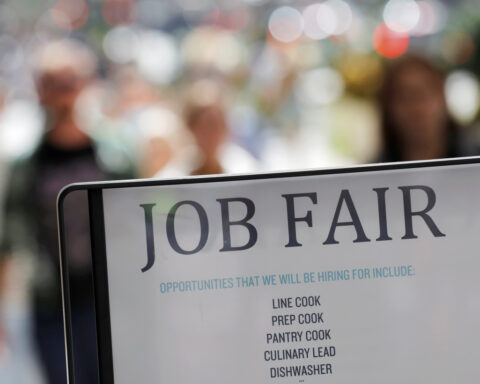New York (CNN) — People are getting impatient with the Federal Reserve.
For the past year, the Fed has kept interest rates at their highest level in more than two decades, making it more expensive to get a mortgage, borrow money and pay off debt. Now the central bank is mulling over when to do something it hasn’t done since the darkest days of the pandemic: cut interest rates.
But Wednesday’s decision by the Fed to once again leave rates unchanged provided little comfort. But the wait could finally end at the Fed’s next policy meeting in September.
“A rate cut could be on the table in the September meeting,” Fed Chair Jerome Powell said on Wednesday, immediately jolting markets.
But some of that luster faded later in his press conference as he repeatedly told reporters that a September cut is by no means a sure shot. “The broad sense of the (Fed’s interest rate-setting) committee is that the economy is moving closer to the point at which it will be appropriate to reduce our policy rate.” In other words, we’re getting there but maybe not by September.
When will the Fed cut rates?
The only thing you can be sure of is that it won’t happen before the Fed’s September 17-18 meeting. The Fed meets two other times this year — in November and December.
It’s looking increasingly unlikely the Fed will lower rates more than once this year, which central bankers forecasted at the start of the year. That’s because the central bank would probably want to space out cuts over a longer period of time to see how the economy evolves.
And if you’re thinking the Fed surely won’t begin cutting in November because of the election, you might want to reconsider.
The Fed, Powell said, will act in the best interest of the American economy regardless of the timing. “We don’t change anything in our approach to address other factors like the political calendar,” he said.
Rate cut probability
That said, investors are entirely convinced the Fed will cut rates at their September meeting, according to Fed funds futures data. And a growing share of investor are betting the Fed will opt for a half-point cut, though the majority believe the central bank will do a quarter-point cut.
What will it take for the Fed to cut in September?
There’s no formula Fed officials follow to answer the burning question on their minds too: When should we cut rates?
Powell provided some rough sketches, saying that if inflation moves down more quickly or stays in line with Fed officials’ expectations while economic growth remains “reasonably strong” and the labor market continues along the path it’s on, a cut in September “could be on the table.”
But if upcoming inflation data shows an unexpected rise, which happened in the first quarter of this year, that could cause officials to further delay cutting rates, he said.
On the other hand, “if the labor market were to weaken unexpectedly or inflation were to fall more quickly than anticipated, we are prepared to respond,” Powell said, implying that this would lead the central bank to lower rates.
Could there be no rate cuts this year?
It seems unlikely that the Fed won’t lower rates at all this year with inflation in spitting distance of the Fed’s 2% target and as other central banks, including the European Central Bank, have already started to cut.
But unlikely doesn’t mean impossible.
Torsten Slok, Apollo Global’s chief economist, is maintaining his prior forecast that the Fed won’t cut rates at all this year.
“There are still two more Consumer Price Index releases before the September 18 (Fed) meeting, so we have to wait and see if the downtrend in inflation continues,” he told CNN. “With solid job growth and solid consumer spending, we think the current market pricing of three cuts this year is wrong.”
The-CNN-Wire
™ & © 2024 Cable News Network, Inc., a Warner Bros. Discovery Company. All rights reserved.

 Record heat wave killed half of this Alaska bird population, and they aren’t recovering
Record heat wave killed half of this Alaska bird population, and they aren’t recovering
 China's CATL to seek Hong Kong listing
China's CATL to seek Hong Kong listing
 Holiday shoppers increased spending by 3.8% despite higher prices
Holiday shoppers increased spending by 3.8% despite higher prices
 Russia declares federal emergency over Black Sea oil spill
Russia declares federal emergency over Black Sea oil spill
 Iowa WWII veteran known as 'The Drummer' shares gift of music this holiday season
Iowa WWII veteran known as 'The Drummer' shares gift of music this holiday season
 US sex-abuse watchdog fires investigator after learning of his arrest for stealing drug money
US sex-abuse watchdog fires investigator after learning of his arrest for stealing drug money
 Hwang Dong-hyuk on killing off his 'Squid Game' characters and wanting to work with Jake Gyllenhaal
Hwang Dong-hyuk on killing off his 'Squid Game' characters and wanting to work with Jake Gyllenhaal








